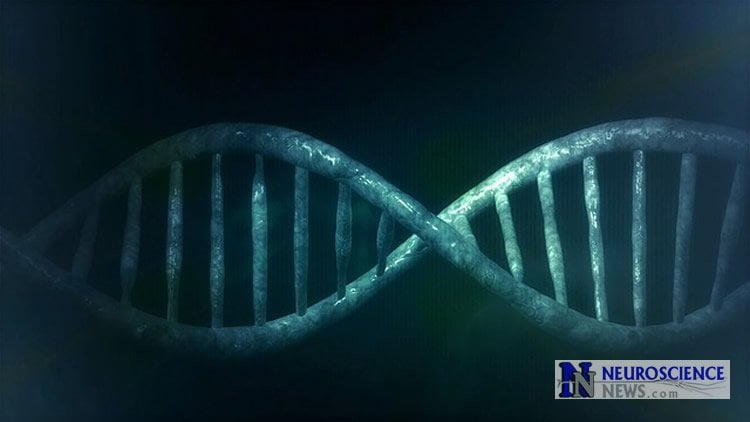Sanford Research scientists have developed a pig model for a neurodegenerative disease that could help better treat the disorder and other physiological conditions. The findings of the project are published in Human Molecular Genetics.
Sanford Research President David Pearce, Ph.D., staff scientist Rosanna Beraldi, Ph.D., scientist Jill Weimer, Ph.D., and their team of investigators engineered the pig model to replicate ataxia telangiectasia (AT), a progressive multisystem disorder caused by genetic mutations in the AT-mutated gene.
The study is titled “A novel porcine model of ataxia telangiectasia reproduces neurological features and motor deficits of human disease.”
AT causes neurological degeneration and motor impairment, primarily in children. Its progression is accompanied by immune disorders and increased susceptibility to cancer and respiratory infections.
“The creation of a more accurate animal model can help bring research of this condition closer to application in human disease,” said Pearce. “We are particularly interested in the role of the AT-mutated gene in the progression of this disease and how treatment methods for similar physiological conditions might benefit from this pig model.”

While several mouse model have been produced for AT, the Sanford Research pig model better replicates the neurological characteristics of the disease, according to Pearce.
Sanford Research often replicates diseases in animal models to explore therapeutic approaches. Last year, Pearce’s mouse model for Batten disease, a group of rare neurodegenerative disorders in children, was also outlined in Human Molecular Genetics.
The pig model developed for AT was created in partnership with Exemplar Genetics, an Iowa-based biotechnology company that specializes in porcine models.
Source: Timothy Gerszewski – Sanford Health
Image Source: The image is in the public domain
Original Research: Abstract for “A novel porcine model of ataxia telangiectasia reproduces neurological features and motor deficits of human disease” by Rosanna Beraldi, Chun-Hung Chan, Christopher S. Rogers, Attila D. Kovács, David K. Meyerholz, Constantin Trantzas, Allyn M. Lambertz, Benjamin W. Darbro, Krystal L. Weber, Katherine A.M. White, Richard V. Rheeden, Michael C. Kruer, Brian A. Dacken, Xiao-Jun Wang, Bryan T. Davis, Judy A. Rohret, Jason T. Struzynski, Frank A. Rohret, Jill M. Weimer, and David A. Pearce in Human Molecular Genetics. Published online September 15 2015 doi:10.1093/hmg/ddv356
Abstract
A novel porcine model of ataxia telangiectasia reproduces neurological features and motor deficits of human disease
Ataxia telangiectasia (AT) is a progressive multisystem disorder caused by mutations in the AT-mutated (ATM) gene. AT is a neurodegenerative disease primarily characterized by cerebellar degeneration in children leading to motor impairment. The disease progresses with other clinical manifestations including oculocutaneous telangiectasia, immune disorders, increased susceptibly to cancer and respiratory infections. Although genetic investigations and physiological models have established the linkage of ATM with AT onset, the mechanisms linking ATM to neurodegeneration remain undetermined, hindering therapeutic development. Several murine models of AT have been successfully generated showing some of the clinical manifestations of the disease, however they do not fully recapitulate the hallmark neurological phenotype, thus highlighting the need for a more suitable animal model. We engineered a novel porcine model of AT to better phenocopy the disease and bridge the gap between human and current animal models. The initial characterization of AT pigs revealed early cerebellar lesions including loss of Purkinje cells (PCs) and altered cytoarchitecture suggesting a developmental etiology for AT and could advocate for early therapies for AT patients. In addition, similar to patients, AT pigs show growth retardation and develop motor deficit phenotypes. By using the porcine system to model human AT, we established the first animal model showing PC loss and motor features of the human disease. The novel AT pig provides new opportunities to unmask functions and roles of ATM in AT disease and in physiological conditions.
“A novel porcine model of ataxia telangiectasia reproduces neurological features and motor deficits of human disease” by Rosanna Beraldi, Chun-Hung Chan, Christopher S. Rogers, Attila D. Kovács, David K. Meyerholz, Constantin Trantzas, Allyn M. Lambertz, Benjamin W. Darbro, Krystal L. Weber, Katherine A.M. White, Richard V. Rheeden, Michael C. Kruer, Brian A. Dacken, Xiao-Jun Wang, Bryan T. Davis, Judy A. Rohret, Jason T. Struzynski, Frank A. Rohret, Jill M. Weimer, and David A. Pearce in Human Molecular Genetics. Published online September 15 2015 doi:10.1093/hmg/ddv356






